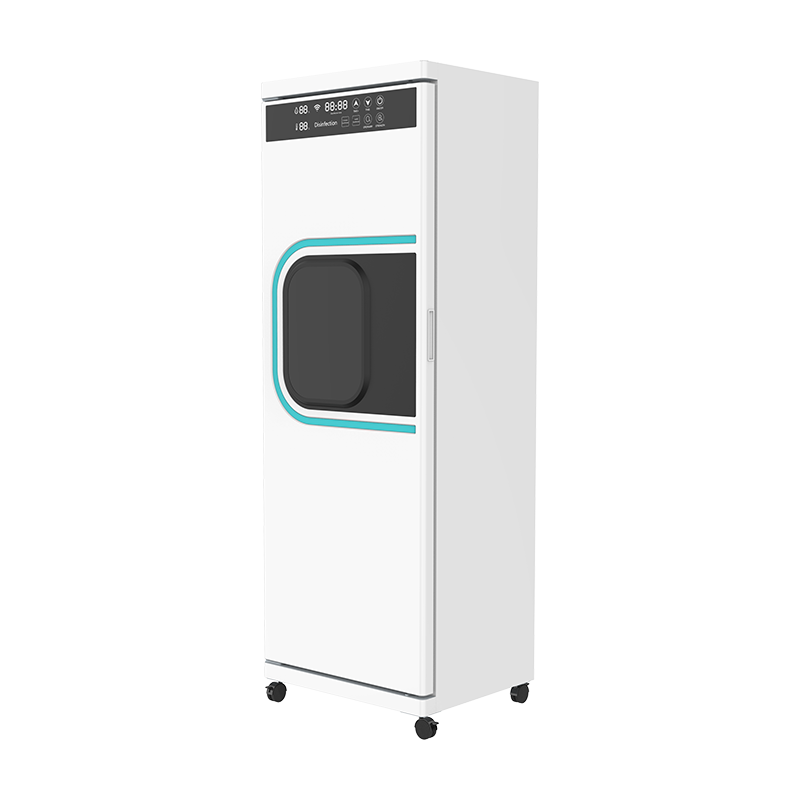1. Three major sources of oil smoke in air fryers
When we observe oil smoke rising when using an air fryer, it is the result of the combined action of multiple factors. Unlike traditional frying, the oil smoke generation mechanism of air fryers is unique, which can be summarized into three key factors: the release of oil from the ingredients themselves, improper control of cooking temperature, and the atomization of oil droplets in high-temperature airflow.
Oil contained in the ingredients themselves
Even ingredients that are advertised as "low-fat", such as chicken breast (fat content of about 3-5%) or lean beef (fat content of about 5-10%), will release a considerable amount of oil in a high temperature environment. And fat-rich ingredients such as chicken wings (fat content of about 15-20%) and salmon (fat content of about 13-17%), when cooked at a high temperature of about 200°C in an air fryer, the fat in their cell structure will seep out in large quantities. Data shows that 200g chicken wings can release about 15ml of liquid fat when cooked in an air fryer for 15 minutes. These fats will produce visible smoke when they encounter high-temperature heating elements.
Cooking temperature is too high or time is too long
The temperature adjustment range of most air fryers is 80-200℃. When the temperature exceeds 180℃, the fat begins to enter the "smoke point critical zone". The smoke points of different fats vary significantly: the smoke point of olive oil is about 160-190℃, peanut oil is about 230℃, and butter is only 150-170℃. Many users habitually choose the highest temperature setting when cooking for a quick crispy effect, but they don't know that when the temperature exceeds the smoke point of the fat used, the fat molecules begin to decompose and volatilize, forming the oil smoke we see. What's more noteworthy is that long-term high-temperature cooking not only increases oil smoke, but also promotes the oxidation of fats to produce harmful substances.
Atomization of oil droplets in high-speed circulating hot air
The working principle of the air fryer is to circulate hot air at a speed of 3-5 meters per second through a powerful fan. Although this design brings the effect of uniform heating, it also causes the liquid oil dripping from the surface of the food to be broken up into micron-sized oil mist particles by the airflow. Studies have shown that the airflow speed inside the air fryer is 2-3 times that of a traditional oven, which greatly increases the contact area between oil and oxygen, accelerates oxidation reactions and smoke formation. Especially when cooking high-fat ingredients such as bacon and sausage, this atomization effect is more obvious, and obvious oil smoke overflow can often be observed 5-8 minutes after the start of cooking.
2. Cleaning, maintenance and long-term smoke prevention techniques
Even if a good smoke reduction cooking strategy is adopted, the air fryer will still accumulate oil residue after long-term use. These residues will not only become the source of oil smoke in subsequent cooking, but may also affect the performance and even safety of the equipment. Establishing a scientific cleaning and maintenance system can not only maintain the best working condition of the equipment, but also reduce the generation of oil smoke from a long-term perspective. These professional-level maintenance techniques will help extend the service life of the air fryer while keeping the kitchen air fresh.
"Instant processing" is the golden rule for keeping the air fryer clean. Data shows that cleaning within 30 minutes after cooking can save 60% of energy compared to cleaning after cooling, and reduce the formation of stubborn oil stains by 70%. This is because when the temperature is 40-60℃, the grease is in a semi-fluid state, has not yet been completely oxidized and polymerized, and is easy to remove. The specific operation can adopt the "three-step instant cleaning method": take out the food immediately after cooking → wait for the frying basket to drop to the touch temperature (about 5 minutes) → wipe with hot water + a small amount of detergent and a soft cloth. If this simple habit can be maintained, 90% of long-term scale accumulation problems can be avoided.
The deep cleaning cycle should be scientifically formulated based on the frequency of use. Light use (1-2 times a week) recommends deep cleaning once a month; moderate use (3-5 times a week) requires once every two weeks; high-intensity use (more than once a day) should be done weekly. The professional deep cleaning process includes: disassembling removable parts (frying basket, grease tray, protective net, etc.) → soaking in hot detergent water for 30 minutes → cleaning tiny gaps with a soft brush → rinsing and drying completely. For stubborn carbon deposits, you can make your own "hydrogen peroxide + baking soda" cleaning paste (ratio 1:2), apply it and let it sit for 15 minutes before scrubbing. This environmentally friendly formula is safer and has the same effect as commercial cleaners. Data shows that air fryers that are regularly deep cleaned produce 40-50% less oil smoke than the same model of equipment that is neglected.
The maintenance of seals is often overlooked but is crucial. The silicone seals on the edge of the air fryer door seal or frying basket will gradually harden and crack if they are exposed to grease for a long time, resulting in serious consequences: hot air leakage during cooking reduces efficiency; grease penetrates into the machine and becomes an invisible source of oil smoke. Gently wiping the seal with food-grade silicone oil once a month can extend its life by 3-5 times. A simple way to check the tightness: try to gently turn the frying basket in the closed state. Ideally, there should be almost no shaking. If it is obviously loose, the seal needs to be adjusted or replaced. Records show that a good seal can increase cooking efficiency by 15% and reduce oil smoke overflow by 20%.
Regular cleaning of the internal air duct is the focus of maintenance for high-end models. After 3-6 months of use, even if the appearance is clean, the internal air duct may still accumulate fine oil mist particles that are difficult to see with the naked eye. Professional maintenance recommends "steam purification" once a quarter: put 1 cup of clean water + 1 tablespoon of white vinegar in the frying basket → run at 200℃ for 10 minutes → turn off the machine and cool it down, then wipe the inner wall with a slightly damp cloth. This steam softening method can increase the removal rate of deep oil stains by 60%. For models with detachable fans (such as some high-end Philips models), the fan blades should be carefully removed and cleaned according to the instructions. This is the key to ensuring smooth airflow - experiments show that the fan airflow efficiency after cleaning can be restored to 95% of the new machine.
Table: Cleaning frequency and method guide for each part of the air fryer
|
Part name |
Cleaning frequency |
Recommended method |
Prohibited method |
Inspection standard |
|
Frying basket |
After each use |
Hot detergent water + soft cloth |
Steel wool scraper |
No visible oil stains |
|
Grease collection tray |
Every 2-3 uses |
Brush after soaking |
Strong acid cleaner |
Reflective bottom |
|
Heating element |
Once a month |
Wipe gently with alcohol cotton swab |
Rinse with water directly |
No black carbon deposits |
|
Inner cavity wall |
Once a week |
Scrub with baking soda paste |
Scrape with metal tools |
No sticky feeling when touched |
|
Fan blades |
Once a quarter |
Clean with a soft-bristled toothbrush |
Twist hard |
Turn without noise |
|
Sealing ring |
Once a month |
Silicone oil maintenance |
Oil lubrication |
Good elastic recovery |
3. Seven practical strategies to reduce oil smoke from the source
After mastering the principle of oil smoke generation in air fryers, we can take a series of proactive measures to reduce oil smoke generation from the source.
- Precise temperature control is the primary strategy to reduce oil smoke. Studies have shown that controlling the cooking temperature 20-30℃ below the smoke point of the oil used can reduce the generation of oil smoke by about 60%. In actual operation, it is recommended to use the "step-by-step heating method": in the initial stage (the first 1/3 of the cooking time), a lower temperature (such as 160℃) is used to make the ingredients cooked thoroughly, and in the middle stage (the middle 1/3 of the time), the temperature is raised to the recommended temperature (such as 180℃) to develop color and taste. In the final stage (the last 1/3 of the time), the temperature is briefly raised to the highest temperature (such as 200℃) as needed to obtain a crispy effect. This method can reduce the amount of oil smoke by 40% compared to high temperature throughout the process, and the food tastes better.
- Ingredient pretreatment optimization can effectively block the chain of oil smoke generation. For high-fat ingredients (such as chicken skin and pork belly), the "pre-cooking and fat removal method" can be used: boil the ingredients in boiling water for 3-5 minutes before cooking to remove 30-50% of the free fat on the surface, drain and then air fry. This method can reduce the amount of oil smoke from chicken legs by 65%, while still keeping the taste juicy. For vegetable ingredients, proper "water retention treatment" is critical - brushing a thin layer of water or low smoke point oil (such as coconut oil) on the surface of the cut vegetables can form a protective layer to delay oil oxidation. Pretreatments to avoid include: marinating with high-sugar sauces in advance (which will increase surface charring), cutting ingredients too thin (increasing the oxidation area), and using oils that have been repeatedly heated (reducing the smoke point).
- The choice of cooking container will affect the degree of oil smoke diffusion. Using special air fryer baking paper (porous silicone mat or perforated baking paper) can intercept about 30% of atomized oil particles compared to directly putting them into the frying basket, preventing them from being carried away by high-speed airflow. A more professional approach is to use a "double-layer protection system": a grooved grease collection tray is placed on the bottom layer (to quickly move dripping grease away from the heat source), and a fine-mesh metal mesh mat (preferably 1-2mm in diameter) is used on the upper layer. This combination can reduce 50% of oil smoke overflow compared to the standard frying basket configuration. It is worth noting that any mat material should ensure that at least 80% of the ventilation area is left to avoid excessive obstruction of air circulation and uneven cooking.
- Oil selection and dosage control are key points that many users ignore. The smoke points of different oils vary greatly: refined peanut oil (smoke point 230℃) is more suitable for high-temperature air frying than virgin olive oil (smoke point 190℃); while butter (smoke point 150℃) is very easy to produce oil smoke. In terms of dosage, the "three-finger rule" is used - the amount of oil pinched with the thumb, index finger, and middle finger (about 3-5ml) is enough to handle 500g of ingredients, saving 90% of oil compared to traditional frying. Using an oil brush instead of pouring to apply oil can ensure that the oil is evenly distributed and not excessive.
- "Active intervention" during cooking can effectively block the accumulation of oil smoke. It is recommended to implement the "two-minute intervention method" when the cooking time is halfway through: pause the machine, quickly remove the frying basket, use kitchen paper to absorb the accumulated liquid fat (can reduce subsequent oil smoke by 30%), turn the ingredients to make them heat more evenly, and add a small amount of fresh fat to replace the oxidized part when necessary. This intervention may seem troublesome, but it only adds 2 minutes of operation time, but it can significantly improve the final effect. For high-end models with a visual window, you can monitor the status of the ingredients through the observation window and end the cooking 30-60 seconds in advance when the oil smoke begins to increase significantly (usually in the late cooking stage).
- Load control is essential to maintain good airflow. The optimal loading capacity of the air fryer is 60-70% of the frying basket capacity (single-layer distribution). Overfilling will result in: airflow obstruction to form local high temperature areas (increase oil smoke); the ingredients squeeze out more oil; and the cooking time is forced to be extended. A practical evaluation method is the "light transmission test" - after the ingredients are loaded, about 40-50% of the gap should be visible from the bottom of the frying basket. For large-scale cooking, it is better to process it in two batches rather than overload it at one time. Although the total time is slightly longer, the amount of oil smoke can be reduced by 40%, and the food quality is more consistent.
- Later exhaust treatment is also important as the last line of defense. Placing a small desktop fan 10cm away from the air fryer (exhausting air outward) can dispel 60% of the escaped oil smoke in time. A more professional approach is to use a portable kitchen oil fume purifier (with activated carbon filter), which can capture more than 90% of PM2.5 particles. Immediately after cooking, cover the frying basket with a wet cloth for 5 minutes to condense the residual grease before washing, which can avoid secondary oil smoke during later cleaning. Families with conditions can place the air fryer 30cm directly below the range hood and turn on the exhaust 5 minutes in advance to form a stable airflow guide.

 EN
EN
 English
English 中文简体
中文简体
.png)









